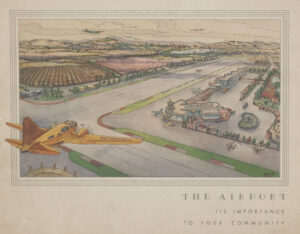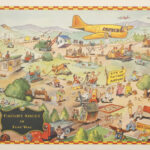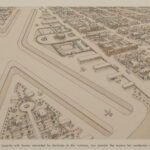Powered flight stands as one of humanity’s greatest technological triumphs: the achievement of a dream that had haunted the sleep, but eluded the grasp, of millions of our forebears from time immemorial.
For some, however, once the technology was perfected, it simply represented a new marketing opportunity.
In 1944, Shell Oil Company published a promotional volume advocating an airport in every community. Visionary in its concept, and a bit utopian in its vision, Shell suggested that carefree motorists, in cars fueled by Shell, would drive to the neighborhood airstrip and board their own private planes. “In the near future,” one caption reads, “you and your 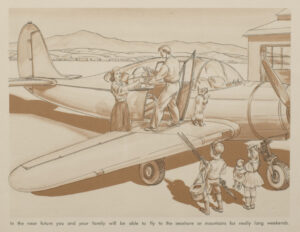 family will be able to fly to the seashore or mountains for really long weekends.”
family will be able to fly to the seashore or mountains for really long weekends.”
Not all of Shell’s predictions were completely far-fetched. “Many thousands of business and professional people will cover the country by air,” Shell predicted. “In cases of disaster and emergency, medical and relief supplies will be rushed in by air.” The text goes on to cover the steps required to set up an airport. These range from discussing site selection and different runway-surfacing materials, to providing a form on which to list names of committee members, who will get the ball rolling.
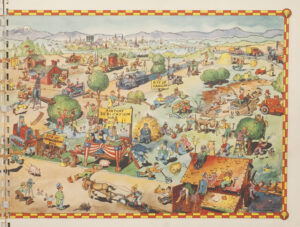 Tipping its hat to MIT’s “father of flight,” Jerome Hunsaker, Shell named this copy’s model community “Hunsakerville.” The name appears on the roof of the illustrated airport on the cover, and the first page indicates that that the volume was “prepared in the interest of Hunsakerville.”
Tipping its hat to MIT’s “father of flight,” Jerome Hunsaker, Shell named this copy’s model community “Hunsakerville.” The name appears on the roof of the illustrated airport on the cover, and the first page indicates that that the volume was “prepared in the interest of Hunsakerville.”
But apparently, the name of the community could be changed on the piece, depending on Shell’s audience. At least one other surviving copy of this publication gives the community name as “Heronville” – a nod, perhaps, to Samuel Heron, an important figure in the development of aircraft engines.

